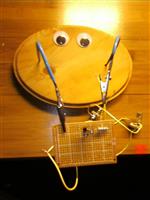
there is so much talk about how the cost of PCB's are incurred. I've visited a few fabs and also have asked Lots of questions.. Theres no relaly clear answers, but heres some things i've learned.
- Smaller holes = more expensive. .3mm drills last about 5x as long as .2mm drills on average.
- Green Mask/White Silkscreen For what ever reason Green is the most common. They use the most of it, its the cheapest
- Lead based HASL finish is the cheapest.. and its almost certainly what the shared panel services use.. ( thats how you get the super cheap pcbs ).. Sadly HASL is'nt much good if you are doing machine placement and have Leadless legs on parts where pcbs need to be flat. Suck it up, your using ENIG or OSP
- The fault rate for larger pcbs is higher than small pcbs, and the $/area goes up as the area goes up. IF the fault rate for say a 100x100mm pcb is 1%, a 400x400mm pcb is 1+1+1+1% or 4% ( the actual numbers will vary for actual real pcbs ).. Addditinally smaller pcbs are easier to fit into shared panel services.
I'm sure that you will all have somethign to add.
- Comments(1)
A****min
Nov 15.2019, 18:11:28
smaller drills probably also have to be run slower, and may not be able to drill through as many stacked panels in one go.
The same applies to routers for slots - 1.6mm is typically where it gets more expensive.
For any other colour they probably also need to need to clean equipment, and there will probably some wastage whenever they finish a batch with a different colour. and forget OSP if you want your PCBs to stay solderable after SMD reflow - e.g. for through-hole parts. More so if they will be sitting around for a while before more soldering is needed.
_Good_ HASL can be OK for flatness but results can be variable.
PCBs with a lot of pads can incur additional bare-board test costs

